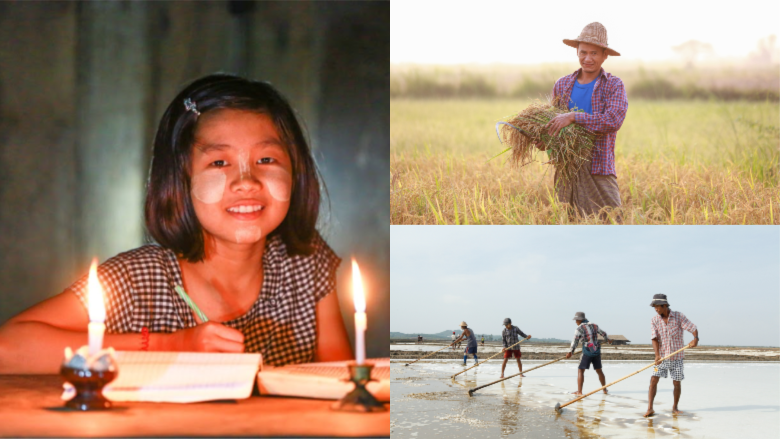NAY PYI TAW, 3 December 2018 – A new study released today, entitled Multidimensional Welfare in Myanmar, was jointly produced by the Department of Population under the Ministry of Labour, Immigration and Population, and the World Bank. It reveals stark variations in the overall degree and types of disadvantages among States and Regions in Myanmar. This will allow a better understanding of the spatial distribution of welfare throughout the country, which is essential for designing policies and programs that enhance equity and inclusion of all populations.
The report uses information generated by the 2014 Myanmar Population and Housing Census. It constructs a multidimensional index of disadvantages that consists of 14 non-monetary indicators related to education, employment, health, water and sanitation, housing and assets. The indicators were selected through a two-stage consultative process beginning in September 2017. The 2014 Census covered most populations in Myanmar, but an estimated 1.2 million people (mostly Muslim populations in Rakhine but also minority populations in Kachin and Kayin) were not enumerated, preventing an assessment of disadvantages for these areas.
The study shows substantial variation in the level and intensity of deprivation between urban and rural areas, among States and Regions and among townships within a State or Region. Overall, rural populations are more than twice as likely as urban populations to experience multiple disadvantages. Households in Rakhine, Ayeyarwady and Kayin are much more likely than in other States and Regions to suffer from severe multiple disadvantages. Sixty percent of households in Rakhine and 36 percent in Kayin are disadvantaged in at least five different areas included in the index. Even without a complete enumeration of the population, Rakhine State is by far the most disadvantaged State or Region. The index will be important in targeting interventions to help break the alarming cycle of poverty, discrimination and violence in Rakhine State.
“The multidimensional disadvantage index is a real breakthrough for Myanmar in understanding deprivation in all its dimensions,” said Ellen A. Goldstein, World Bank Director for Myanmar, Cambodia and Lao PDR, “For the first time, we know the spatial distribution of welfare down to the township level, and we can disentangle different sources of deprivation. This will allow better targeting of the right interventions in the right places in order to reduce poverty and enhance equity and inclusion for all communities in Myanmar.”
Variations among townships within a State or Region can be surprising. Some townships on the outskirts of relatively well-off Yangon are as deprived as border areas of Shan and Chin States, pointing to the emerging challenge of urban poverty.
By focusing on a multidimensional approach that assesses whether people can fulfill their basic needs across a variety of non-monetary dimensions, the report on Multidimensional Welfare in Myanmar seeks to promote evidence-based policy making to target households and communities most in need throughout Myanmar.

